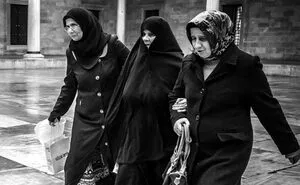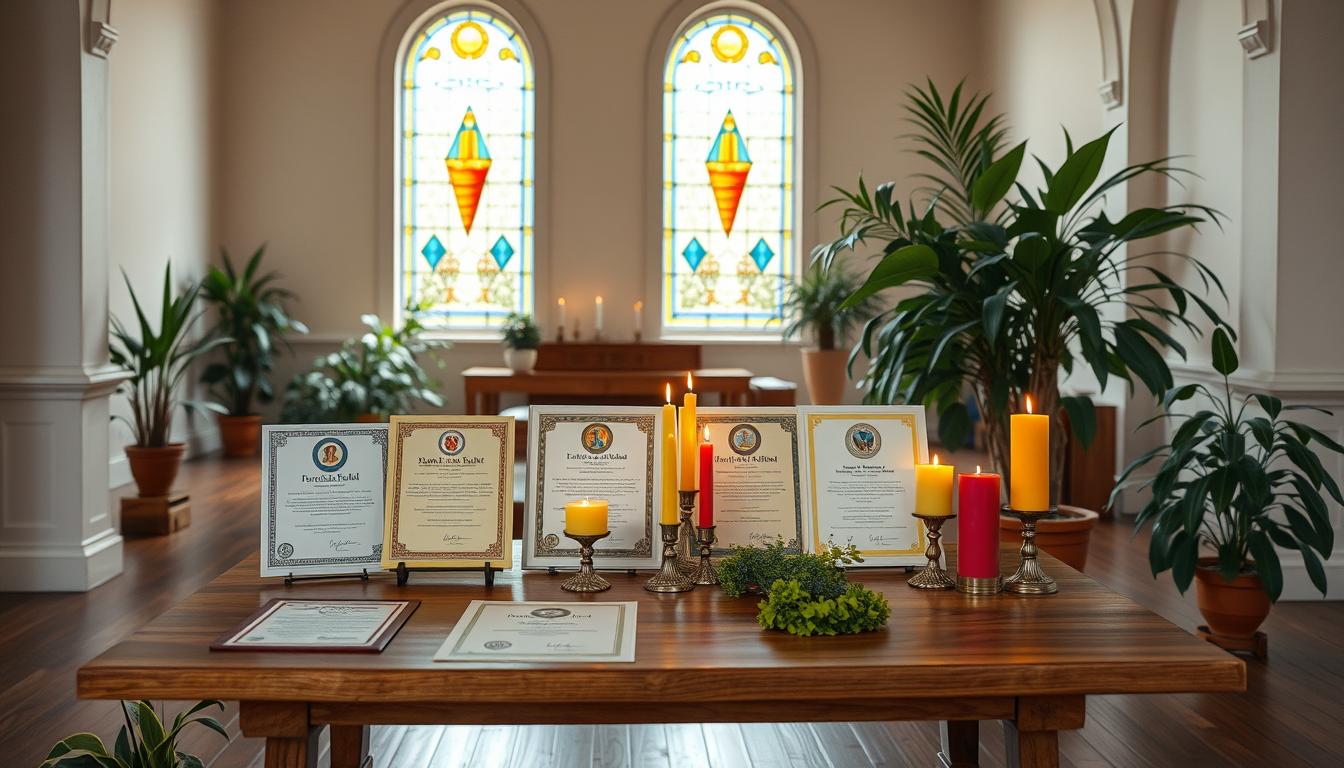The relationship between women and religion is a complex tapestry of power, role and resistance, interwoven through centuries of history, doctrines and cultural practices.
Adverts
Female participation in religious spheres has been marked by an intriguing duality: on the one hand, veneration and respect for divine and holy female figures; on the other, restrictions and limitations imposed on women's roles and autonomy within religious structures.
This article explores the multifaceted dynamics of female presence in different religious traditions, highlighting both the challenges faced and the forms of empowerment and resistance that emerge in this context.
Delving into historical and contemporary narratives reveals an ongoing struggle for gender recognition and equality that transcends cultural and religious boundaries.
Amidst this, stories of female leadership, deep devotion, and religious activism challenge conventional perceptions and redefine the role of women in building more inclusive and equitable spiritual communities.
This panorama reveals not only the existing tensions, but also the transformative potential that women hold in the spheres of faith and spirituality.
The History of Women in Religion
Historically, women have played crucial roles in religious practices, although often on the margins of formal power structures. In ancient times, many societies were polytheistic and had goddesses who were worshiped equally with male gods, suggesting a form of recognition of female power.
For example, in Ancient Greece, the goddess Athena was venerated for her wisdom and skills in battle, while in Egyptian religion, Isis was worshiped as the goddess of magic and motherhood, playing central roles in beliefs and rituals.
These female deities not only highlighted women's ability to wield power and influence, but also reflected a worldview that recognized the feminine as divine.
However, as monotheistic religions gained prominence, with an emphasis on single male deities, the role of women began to be viewed through a more restrictive lens.
The emergence of Judaism, Christianity and Islam brought with it a significant change in the way the feminine was perceived and incorporated into religious practice.
In these contexts, women often found themselves relegated to secondary roles, with their contributions and leadership limited by doctrinal interpretations.
Female Leadership and Institutional Barriers
Within the vast spectrum of religious traditions, female leadership often encounters institutional barriers that restrict their role to supportive or invisible roles.
These barriers, rooted in patriarchal interpretations of sacred texts and traditions, have historically limited women's full participation in many faith communities.
Yet amid these restrictions, notable examples have emerged of women who have not only challenged these norms but also managed to transform their communities in meaningful ways.
An exemplary figure is that of women who have achieved leadership positions in Protestant denominations, where they have served as pastors, moderators and bishops, breaking with long traditions of exclusively male leadership.
Likewise, in Buddhism, the ordination of nuns has been revived in traditions where it had been forgotten, allowing women fuller participation in monastic and spiritual life.
These reform movements not only challenge institutional barriers, but also redefine the role of women in religion, demonstrating that faith and spirituality transcend gender limitations.
Through their leadership, these women inspire change not only within their specific religious traditions, but also provoke a broader reexamination of power structures in many other spheres of society.
Feminine Symbolism and Empowerment
Feminine symbolism in religions transcends mere representation; it offers a mirror for women to see themselves reflected in the divine, strengthening their identity and spirituality.
Female deities such as the Hindu goddess Durga, who symbolizes strength and protection, or the Virgin Mary in Christianity, who represents purity and motherhood, are powerful examples of how the sacred feminine manifests itself in different cultures.
These divine figures provide models of resilience, compassion, and power, allowing women to see their own struggles and aspirations reflected in the larger narrative of human existence.
Veneration of mythological saints and heroines, such as Joan of Arc, who defied the gender conventions of her time to lead in times of war, inspires courage and determination.
By connecting with these feminine symbols, women not only find solace and guidance on their personal journeys, but also reclaim a space where the sacred feminine is celebrated and revered.
This recognition of the divine feminine challenges patriarchal structures within religions, promoting a more inclusive and equitable understanding of the sacred, where all genders can find empowerment and inspiration.
Religious Education and Women
Religious education, historically dominated by patriarchal paradigms, has been a crucial arena in women's struggle for equality and recognition within spiritual and theological spheres.
Traditionally, many religious traditions reserved the formal study and interpretation of sacred scriptures exclusively for men, creating an implicit barrier that prevented women from fully accessing religious knowledge and practices.
This scenario began to change as feminist movements and advocates of gender equality gained strength, challenging established norms and demanding space for women in religious educational environments.
Significant progress has been made: theological educational institutions now welcome students of both genders, allowing women to not only participate but also actively contribute to theological dialogue.
These changes are evident in the growing presence of female theologians, pastors, rabbis, and spiritual leaders, who bring new and inclusive perspectives to the interpretation of doctrines.
By challenging traditional interpretations that often marginalize or downplay the role of women, they are forging a path toward a more equitable and comprehensive understanding of the faith that recognizes the dignity and worth of all its followers.
This movement toward inclusion not only strengthens the position of women within their religious communities, but also promotes a richer and more diverse religious practice, reflecting the multiplicity of voices and experiences of its adherents.
Resistance and Reform
Women's resistance against oppressive religious structures is a narrative of courage, innovation and determination.
In several religious traditions, women have faced significant barriers, but in response, they have created safe spaces such as study groups and all-female prayer communities.
These spaces not only allow women to explore their faith outside of patriarchal boundaries, but they also foster an environment of mutual support and spiritual growth. Furthermore, advocacy for institutional reforms is a crucial aspect of this resistance.
Women theologians, scholars, and community leaders challenge traditional interpretations of scripture that perpetuate gender inequality, promoting a more inclusive and equitable understanding of religion.
Movements like “Women's Mosque Movement” in the United States and “Mujeristas” in Latin America are vivid examples of how women are reclaiming their place in religious traditions.
They not only provide spaces for women to lead and participate fully in religious life, but they also highlight the importance of visible female leadership.

These initiatives have made significant progress, challenging gender stereotypes and encouraging greater equality within religious communities.
Through these forms of resistance, women are not only reclaiming their right to fully participate in their religious traditions, but they are also actively shaping the future of these practices to be more inclusive and just.
The Feminization of Religion
The “feminization” of religious practices is a dynamic response to the historical challenges imposed on women in spiritual contexts. This phenomenon manifests itself through a reorientation of traditional emphases, prioritizing compassion, community and care over dogmatic and patriarchal approaches.
Such a change is significant, reflecting a transformation in gender dynamics that transcends religious boundaries, influencing society on a broader spectrum.
By valuing qualities often associated with the feminine, these practices promote a more inclusive and equitable space, challenging established norms and power structures.
This movement not only empowers women within their religious communities, but also signals a paradigmatic shift in the way values and virtues are perceived and valued socially.
The feminization of religion can, therefore, be seen as a vector of social change, promoting a more empathetic and collaborative model of interaction, which has the potential to redefine power relations and promote a more just and compassionate society.
Conclusion: Women’s Place
Women in religion represent a dynamic force of power, role and resistance. Through the centuries, they have faced restrictions and limitations, but they have also found ways to empower, inspire, and reform their religious communities.
The journey of women across religious traditions is one of continuous resistance and reclaiming space, reflecting a never-ending search for equality and recognition.
As societies evolve, so does the understanding and appreciation of women's contributions to religion, promising a future where women's power, role and resistance are fully recognized and celebrated.




